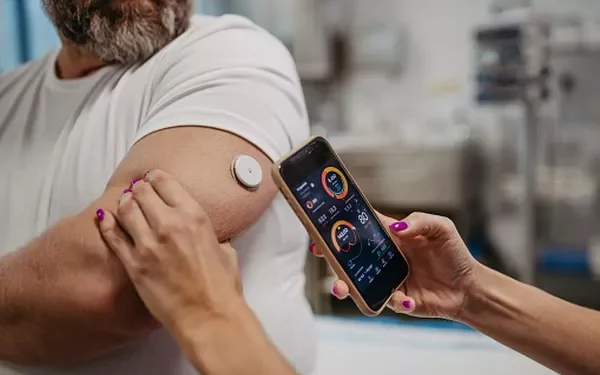Blood glucose monitoring plays an essential role in managing diabetes, and understanding the methods for assessing blood sugar levels is crucial for both patients and healthcare providers. One common tool used in the monitoring of blood glucose levels is the random blood glucose test. This article provides an in-depth exploration of the random blood glucose test, including its significance, how it is performed, its role in diagnosing diabetes, and the advantages and limitations of the test.
Introduction to Blood Glucose Monitoring
Glucose is the primary energy source for the body’s cells. It is obtained from the foods we eat, especially carbohydrates. Insulin, a hormone produced by the pancreas, helps the body use or store glucose. However, when insulin production or function is impaired, as is the case with diabetes, glucose levels in the blood can become abnormally high or low, leading to serious health complications.
Diabetes is a chronic condition characterized by high blood glucose levels. Managing these levels is critical to preventing complications such as cardiovascular disease, kidney damage, nerve damage, and vision problems. Monitoring blood glucose is therefore a fundamental aspect of managing diabetes.
There are various ways to measure blood glucose levels, and one of these methods is the random blood glucose test. This test provides an immediate snapshot of the blood sugar levels at any given time, regardless of when the person last ate.
What Is a Random Blood Glucose Test?
A random blood glucose test measures the level of glucose in the blood at a specific point in time. Unlike fasting blood glucose tests, which require the individual to fast for a certain number of hours before the test, the random blood glucose test can be performed at any time of the day, irrespective of the person’s food intake. This makes it a convenient option for both healthcare providers and patients when a quick assessment is needed.
How Is a Random Blood Glucose Test Performed?
The procedure for performing a random blood glucose test is simple and minimally invasive. It typically involves the following steps:
Preparation: No special preparation is required for this test. Unlike fasting glucose tests, patients do not need to refrain from eating or drinking beforehand. The test can be done at any time of the day.
Blood Collection: A small sample of blood is usually drawn from a vein in the arm, though a fingerstick method may also be used. The blood is collected into a sterile container or on a test strip, depending on the type of equipment being used.
Analysis: The blood sample is analyzed using a glucose meter or sent to a laboratory for further analysis. The result is typically available within minutes if using a glucose meter or within a few hours for laboratory testing.
Interpretation: The test result will indicate the current level of glucose in the blood, measured in milligrams per deciliter (mg/dL). Healthcare professionals use these readings to assess the patient’s glucose control and determine if further testing or treatment is necessary.
Normal and Abnormal Blood Glucose Levels
Blood glucose levels vary throughout the day depending on factors such as food intake, physical activity, and stress. However, general reference ranges for a random blood glucose test are as follows:
Normal range: A random blood glucose level of less than 140 mg/dL is generally considered normal.
Prediabetes: Blood glucose levels between 140 and 199 mg/dL may indicate prediabetes, a condition where blood sugar levels are higher than normal but not high enough to be classified as diabetes.
Diabetes: A random blood glucose level of 200 mg/dL or higher, accompanied by symptoms of diabetes such as excessive thirst, frequent urination, and fatigue, may indicate that the individual has diabetes.
It is important to note that a single random blood glucose test result is not sufficient to diagnose diabetes. If the result is abnormal, further testing, such as a fasting blood glucose test or an oral glucose tolerance test (OGTT), is usually recommended to confirm the diagnosis.
The Role of Random Blood Glucose Tests in Diagnosing Diabetes
The random blood glucose test is commonly used as an initial screening tool for diabetes. If the test result indicates an abnormally high blood glucose level, the healthcare provider may recommend additional testing to confirm the diagnosis. These tests may include:
Fasting Blood Glucose Test: This test requires the individual to fast for at least eight hours before the blood sample is drawn. It is used to determine how well the body is managing glucose when it is not influenced by food intake.
Oral Glucose Tolerance Test (OGTT): The OGTT measures the body’s ability to metabolize glucose. After fasting, the individual drinks a glucose solution, and blood samples are taken at regular intervals to monitor the glucose response.
Hemoglobin A1c Test: This test provides an average of blood glucose levels over the past two to three months, offering a long-term view of glucose control.
If any of these tests confirm that blood glucose levels are consistently high, a diagnosis of diabetes may be made. However, other factors, such as age, family history, and other health conditions, are also taken into account when diagnosing and managing diabetes.
Advantages of the Random Blood Glucose Test
The random blood glucose test offers several advantages that make it a valuable tool in diabetes management:
Convenience: Unlike fasting glucose tests, the random blood glucose test can be performed at any time of the day, without the need for fasting. This makes it more convenient for patients who may have difficulty fasting for extended periods.
Quick Results: The test provides immediate results, which is beneficial in emergency situations or when a rapid assessment is required.
Early Detection: The random blood glucose test can help detect elevated blood glucose levels early, which is crucial for preventing the progression to full-blown diabetes and its associated complications.
Simple Procedure: The test is minimally invasive and relatively easy to perform, requiring only a small blood sample. This makes it more accessible for both patients and healthcare providers.
Limitations of the Random Blood Glucose Test
While the random blood glucose test is useful, it does have some limitations:
Inability to Diagnose Diabetes on Its Own: A single random blood glucose test result is not sufficient to diagnose diabetes. High blood glucose levels can be influenced by factors such as stress, illness, or certain medications, leading to temporary spikes in blood sugar. Therefore, further testing is usually required to confirm a diagnosis.
Fluctuating Results: Blood glucose levels can fluctuate throughout the day, influenced by factors such as food intake, physical activity, and emotional stress. As a result, a random test may not always reflect a person’s typical glucose control.
Limited to Screening: The random blood glucose test is primarily used for screening purposes. For ongoing monitoring of blood glucose levels, other tests such as the fasting blood glucose test or the hemoglobin A1c test are typically preferred.
Lack of Specificity: The test does not provide information about how the body responds to glucose over time or how well insulin is working. Therefore, it is less useful for monitoring long-term blood glucose control compared to other tests like the A1c test.
When Is a Random Blood Glucose Test Used?
The random blood glucose test is commonly used in several situations:
Routine Screening for Diabetes: Healthcare providers may use the random blood glucose test as part of a routine checkup, especially for individuals who are at higher risk for diabetes, such as those who are overweight, have a family history of diabetes, or are over the age of 45.
Symptom Management: If a patient presents with symptoms of diabetes, such as excessive thirst, frequent urination, and fatigue, a random blood glucose test may be performed to assess the blood glucose level at that time.
Monitoring Blood Glucose in Known Diabetics: For individuals already diagnosed with diabetes, the random blood glucose test may be used as part of ongoing monitoring to assess blood sugar fluctuations during the day.
Assessing Treatment Efficacy: The test can also be used to assess how well a treatment plan, including medications, diet, and exercise, is helping to control blood glucose levels.
Factors That Can Influence Random Blood Glucose Test Results
Several factors can influence random blood glucose test results, leading to variations in readings. These factors include:
Food and Drink: Recent meals can cause a temporary increase in blood glucose levels. Foods high in carbohydrates, sugars, or processed foods are more likely to cause significant spikes in blood sugar.
Stress: Physical or emotional stress can trigger the release of hormones such as cortisol, which can raise blood glucose levels.
Medications: Certain medications, including corticosteroids, diuretics, and some antipsychotic drugs, can increase blood glucose levels.
Illness: Acute illnesses such as infections or fevers can lead to higher blood glucose levels due to the body’s stress response.
Exercise: Physical activity can lower blood glucose levels, especially if performed after a meal.
Other Health Conditions: Conditions such as high blood pressure, high cholesterol, and polycystic ovary syndrome (PCOS) can also influence blood glucose levels.
Conclusion
The random blood glucose test is a valuable tool in diabetes screening and management. While it is convenient and provides immediate results, it is important to remember that it is not a definitive test for diagnosing diabetes. High or abnormal readings should be followed by further diagnostic tests to confirm whether diabetes or another underlying condition is present.
By understanding the random blood glucose test, its advantages, limitations, and when to use it, both patients and healthcare providers can make more informed decisions about managing and diagnosing diabetes. Regular blood glucose monitoring, combined with lifestyle changes, medication, and professional guidance, is essential for maintaining optimal health and preventing complications associated with diabetes.
Related topics:
What Is a Normal Diabetic Reading?



























